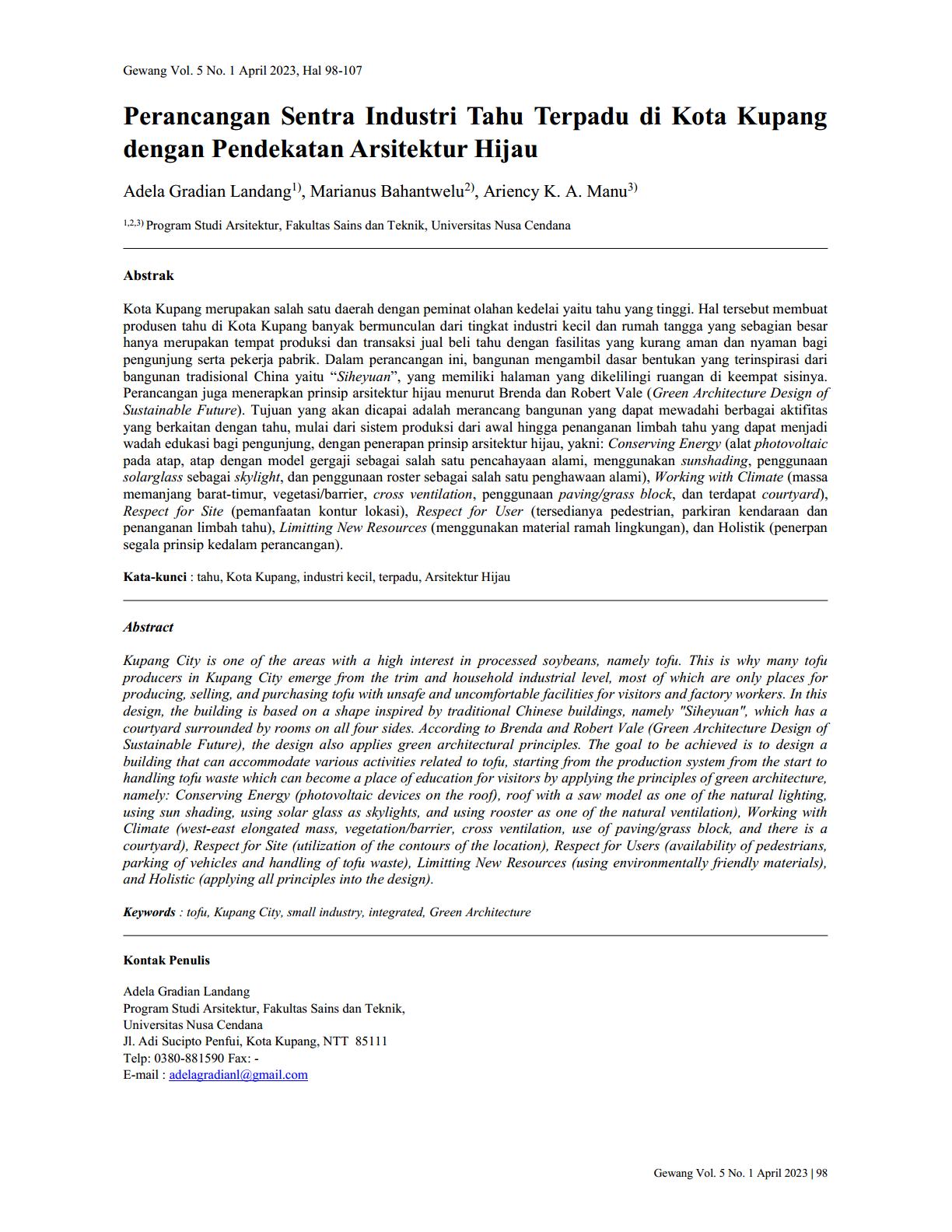Perancangan Sentra Industri Tahu Terpadu di Kota Kupang dengan Pendekatan Arsitektur Hijau
Main Article Content
Abstract
Kupang City is one of the areas with a high interest in processed soybeans, namely tofu. This is why many tofu producers in Kupang City emerge from the trim and household industrial level, most of which are only places for producing, selling, and purchasing tofu with unsafe and uncomfortable facilities for visitors and factory workers. In this design, the building is based on a shape inspired by traditional Chinese buildings, namely "Siheyuan", which has a courtyard surrounded by rooms on all four sides. According to Brenda and Robert Vale (Green Architecture Design of Sustainable Future), the design also applies green architectural principles. The goal to be achieved is to design a building that can accommodate various activities related to tofu, starting from the production system from the start to handling tofu waste which can become a place of education for visitors by applying the principles of green architecture, namely: Conserving Energy (photovoltaic devices on the roof), roof with a saw model as one of the natural lighting, using sun shading, using solar glass as skylights, and using rooster as one of the natural ventilation), Working with Climate (west-east elongated mass, vegetation/barrier, cross ventilation, use of paving/grass block, and there is a courtyard), Respect for Site (utilization of the contours of the location), Respect for Users (availability of pedestrians, parking of vehicles and handling of tofu waste), Limitting New Resources (using environmentally friendly materials), and Holistic (applying all principles into the design).
Downloads
Article Details
This license enables reusers to distribute, remix, adapt, and build upon the material in any medium or format, so long as attribution is given to the creator. The license allows for commercial use

